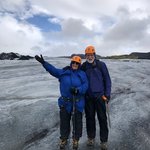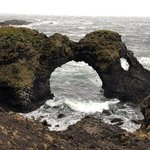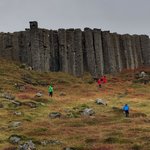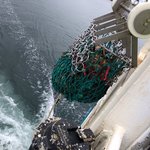Understanding the Seasons in Iceland
When you start planning your trip to Iceland, we recommend taking into account seasonal factors (weather, hours of daylight) as well as how many travelers are expected to travel to the areas and sights you plan to visit while in Iceland.
Given its northern latitude, just south of the arctic circle, Iceland experiences a dramatic change in seasons, all of which have their own special charm and character.
Tourism in Iceland has grown tremendously in recent years, with the number of annual visitors increasing from just below 500,000 in 2010 to well over 1.5 million in 2016. This means that a visit to Geysir, for instance, during the peak season can almost feel like you are on Times Square (well, it's not quite that crowded, but you get the point).
This all means that it pays off to carefully plan your trip. Even small tweaks to your plan, like planning your Golden Cirlce tour during early morning or late night (both perfect during Iceland's long summer days) will let you beat the crowds and see these natural wonders in a more peaceful setting. Also, more remote areas in the highlands and the West Fjords are a lot less crowded, and have a more authentic feel to it, regardless of season.
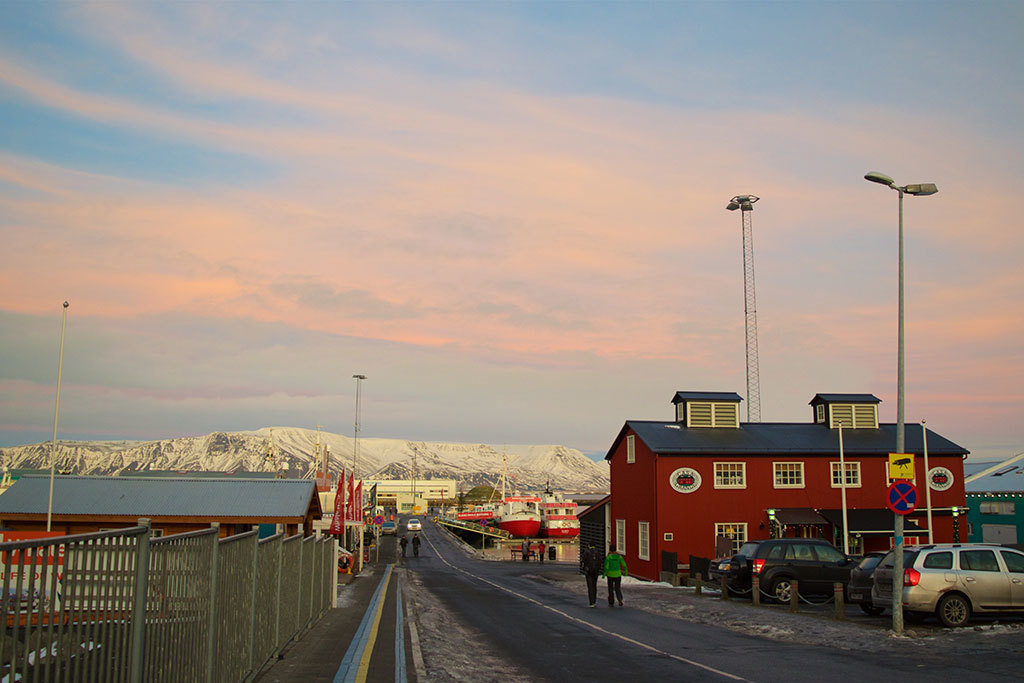


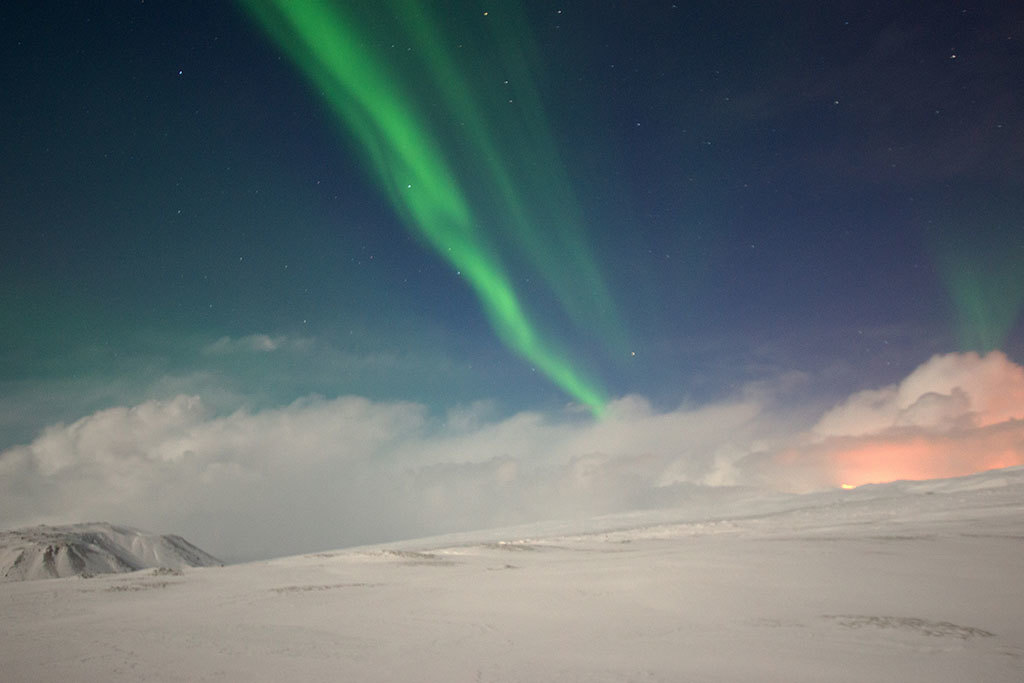
Visiting Iceland in Winter
The winter months (December-February) receive little daylight, bring heavy snow, and have temperatures hovering around 32°F/0°C. This is the best time for viewing the Northern Lights. It's not the best time, however, for longer roads trips as the driving conditions aren't great in the winter. Best to do day trips at this time, if you're unfamiliar with winter weather conditions.
Daylight: Winter in Iceland sees very short days, but the extent of the darkness very much depends on when exactly you visit. Hours of daylight range from 4 hours in Reykjavik at the end of December, to 10 hours at the end of February. If you are brave enough to travel to the north of Iceland in midwinter you'll have only 2 hours of daylight, and in some towns, the sun disappears for a couple of months since it's hiding behind the mountains.
Crowds: Winter has fewer visitors than the other 3 seasons, but winter tourism has increased even stronger than the other seasons in recent years. December, January, and February see approximately one-third the number of visitors than the peak travelers season in summer.
More Tips for Visiting Iceland in Winter
Iceland in December
Iceland in January
Iceland in February
Visiting Iceland in Spring
In spring (March - May) the temperatures start to rise, the winter snow starts melting and natural wonders come to life with the longer daylight. Icelanders celebrate the increased daylights with spring festivals. The tourist crowds are still light, making spring a great to time to visit its more accessible natural highlights. Many hikes in the highlands are still inaccessible, though.
Daylight: If you visit in early spring (March) the days are still shorter than the nights, but this quickly changes in late March, when the days lengthen quickly to reach over 20 hours of daylight in late May
Crowds: Spring tends to be slightly more crowded than winter, and the number of travelers picks up towards the end of May.
Iceland in March
Iceland in April
Iceland in May
Visiting Iceland in Summer
In the summer months (June-August), the days are long, the temperatures average a reasonable 53°F/12°C, and Iceland’s highlands open up for active adventures. The summer is also Iceland's busiest tourist season and a popular time to embark on a Midnight Sun tour. Most of Iceland's festivals happen during the summer months, each town with its own event. Hiking trails in the highlands open up, making Iceland a trekkers paradise.
Daylight: Summer in Iceland has very long days, which makes a summer trip a special experience. During midsummer (the end of June) the sun doesn't set until midnight and rises again a few short hours later, around 3am. If you travel to the north of Iceland you will experience 24 hours of daylight. As summer progresses the days shorten somewhat to about 15 hours of sunlight at the end of August.
Crowds: Summer gets very crowded. Hotels tend to sell out and the popular sights near Reykjavik and along the South Coast get very crowded.
Iceland in June
Iceland in July
Iceland in August
Visiting Iceland in Autumn
The autumn months (September - November) bring unpredictable weather and occasional heavy storms. The days get shorter and the Northern Lights start making their first appearances. One of the key attractions of visiting Iceland in autumn are the amazing autumn colors that make the scenery look even more stunning when you catch the right light.
Daylight: The days shorten dramatically in fall, from 15 hours in early September to 5 hours at the end of November. So if you care about having enough daylight to experience longer day trips, make sure you visit in early fall.
Crowds: Visitor numbers drop off quickly as fall sets in. September is a great month since the days are still long, while most of the summer crowds have left Iceland by then.
Iceland in September
Iceland in October
Iceland in November
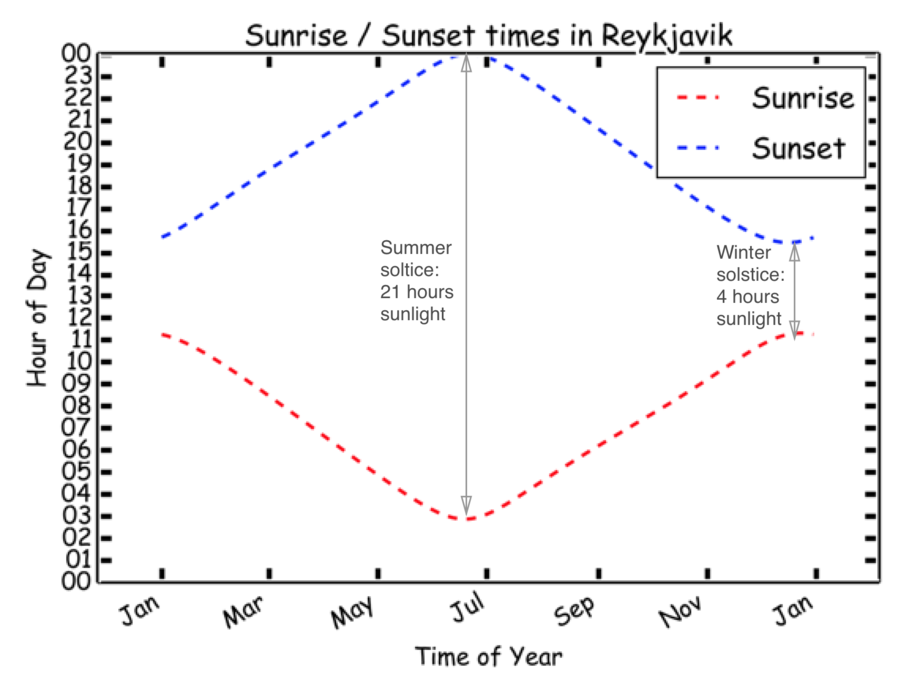
Events and Festivals in Iceland
Below, you'll find some of Iceland's most important events. Consider planning your trip so that you can attend one of them.
January 6th - Tþrettándinn
To mark the official end of the Christmas festivities and the start of a new year, Icelanders build bonfires, set off fireworks, and sing traditional songs in public squares, while children sculpt mythical Icelandic creatures from snow and ice. Often the skies light up with the colorful flashes of the Northern Lights at this time of year and temperatures plummet well below freezing.
January 19th - 25th - Tþorrablót
This annual mid-winter Viking festival has been celebrated across Iceland for more than 1,000 years. Communities come together and visitors are welcomed into the celebrations. Traditional Viking foods (for those brave enough to try them) including pickled ram’s testicles, Hakarl (putrefied shark), and boiled sheep’s head are often shared around huge public bonfires, and traditional Icelandic songs are sung. The Tþorrablót festival offers an insight into the unique culture of this winter wonderland.
February - Ash Wednesday (date varies) - Öskudagur
Much like Halloween in many parts of the world, during the Ash Wednesday Festival, Icelandic children dress up in traditional Icelandic costumes and run around towns and villages singing. In return, residents give them local cream puffs (bollur).
March 1st - Beer Day
To commemorate the legalization of alcohol above 2.2% in 1989, Icelanders take the whole day off on March 1 and drink alcohol above 2.2% with friends and family in the local pubs and taverns. A favourite among locals is Brennivin, an herbal schnapps liquor at 40% volume.
April - Easter Week - End of winter celebrations
Icelanders take a five-day holiday from Holy Thursday to Easter Monday to spend time with family. Locals welcome visitors into their homes to share smoked lamb and huge chocolate eggs. In Ísafjörður in the west of the island, the “I Never Went South” rock music festival wakes the town from its winter slump.
Mid-May - Reykjavik Arts Festival
For 16 days in mid-May the capital city comes to life with artists, theatre, music and crafts. World famous singers join their lesser-known Icelandic counterparts and offer free concerts in Reykjavik’s parks and open areas.
June 1st weekend of June - Festival of the Sea
Fishermen take part in rowing and strongman competitions around Reykjavik, and freshly caught seafood and brewed beers are sold at reduced prices to celebrate those who make a living from the sea.
Mid-June - Viking Festival
For 10 days in mid-June, the western town of Hafnarfjörður goes back in time, with streets decorated with sheepskin tapestries, Viking hordes roaming the streets in search of victims, and pitched battles with British and German Christian competitors. Nowhere else in the world celebrates the Vikings quite like this.
June 17th - Independence Day
Iceland's Independence Day marks a large celebration across the country, and its 1944 secession from Danish rule. A parade marches through the main street of cities and towns, followed by music and local celebrations.
1st weekend of August - Verslunarmannahelgi
Despite its long name, the main theme of this event is simple: to party. Icelanders retreat to the Westman Islands to camp out all weekend, listen to live concerts, drink lots of alcohol, and dance around a campfire.
End of September - Réttir
Literally meaning “round-up” - is just that: the time of year when thousands of sheep and wild horses are rounded up for winter. It is a sight to behold.
Mid-October - Iceland Airwaves
Perhaps Iceland’s most famous music concert, this annual event attracts crowds from across the world who come to hear Iceland’s best indie and alternative bands.
December - Christmas
Christmas Season - Iceland only gets about four hours of daylight around Christmas, so the streets of towns and villages flicker with candle lights and the glow of the Northern Lights. For 13 nights leading up to Christmas, children leave a shoe out at night and wake up to find small presents left by the “yuletide lads,” Iceland’s version of Santa Claus.
Chat with a local specialist who can help organize your trip.
Seasonal Travel patterns and the Growth of Tourism in Iceland
Since 2010 tourism to Iceland has grown tremendously, straining the available accommodations and creating issues of overcrowding in some of the most popular areas for travelers in Iceland, such as the Golden Circle Area and the South Coast. What this means for travelers is that it is important to plan your visit carefully, unless you don't mind having to enjoy Iceland's key attractions shoulder to shoulder with hundreds of other travelers.
Here are a few tips to help you beat the crowds:
- If you can, avoid the busiest travel months June, July, and August. As shown in the chart below, the summer months are up to 3 times more crowded than the quieter winter months.
- If your schedule doesn't let you travel outside of the summer months, and you want to see the popular areas, try to plan your visits early morning or late nights
- Avoid the crowded areas altogether and take a domestic flight or drive to remote areas such as the West Fjords, Troll Peninsula in the north and Egilsstadir in eastern Iceland.

Conclusion: What is the best time to visit Iceland?
As discussed above, choosing the right time to visit Iceland really depends on what you would like to see & do, how "crowd-tolerant" you are, and if you can afford hotel prices in the peak season.
If you want to see the Northern Lights you should visit in winter, and thus brave the short days and cold weather, as it will maximize your chances of seeing this elusive natural phenomenon.
If your goal is to see & explore Iceland's great nature and outdoors, the best time is late spring to early fall. The summer months usually bring great weather and long days, but also attract big tourist crowds. Given this we'd recommend late August to early September since the weather still tends to be good, the days are still quite long and the biggest crowds have left.

